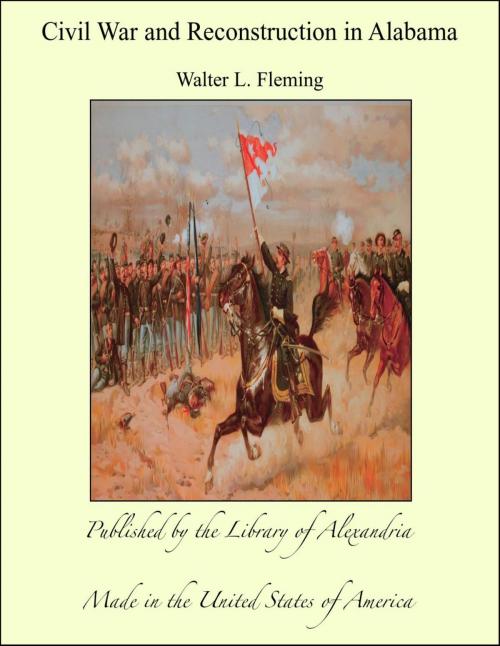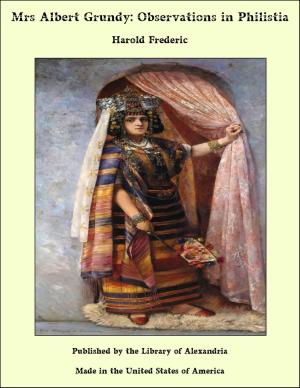Civil War and Reconstruction in Alabama
Nonfiction, Religion & Spirituality, New Age, History, Fiction & Literature| Author: | Walter L. Fleming | ISBN: | 9781465574398 |
| Publisher: | Library of Alexandria | Publication: | March 8, 2015 |
| Imprint: | Language: | English |
| Author: | Walter L. Fleming |
| ISBN: | 9781465574398 |
| Publisher: | Library of Alexandria |
| Publication: | March 8, 2015 |
| Imprint: | |
| Language: | English |
This work was begun some five years ago as a study of Reconstruction in Alabama. As the field opened it seemed to me that an account of ante-bellum conditions, social, economic, and political, and of the effect of the Civil War upon ante-bellum institutions would be indispensable to any just and comprehensive treatment of the later period. Consequently I have endeavored to describe briefly the society and the institutions that went down during Civil War and Reconstruction. Internal conditions in Alabama during the war period are discussed at length; they are important, because they influenced seriously the course of Reconstruction. Throughout the work I have sought to emphasize the social and economic problems in the general situation, and accordingly in addition to a sketch of the politics I have dwelt at some length upon the educational, religious, and industrial aspects of the period. One point in particular has been stressed throughout the whole work, viz. the fact of the segregation of the races within the state—the blacks mainly in the central counties, and the whites in the northern and the southern counties. This division of the state into “white” counties and “black” counties has almost from the beginning exercised the strongest influence upon the history of its people. The problems of white and black in the Black Belt are not always the problems of the whites and blacks of the white counties. It is hoped that the maps inserted in the text will assist in making clear this point. Perhaps it may be thought that undue space is devoted to the history of the negro during War and Reconstruction, but after all the negro, whether passive or active, was the central figure of the period.
This work was begun some five years ago as a study of Reconstruction in Alabama. As the field opened it seemed to me that an account of ante-bellum conditions, social, economic, and political, and of the effect of the Civil War upon ante-bellum institutions would be indispensable to any just and comprehensive treatment of the later period. Consequently I have endeavored to describe briefly the society and the institutions that went down during Civil War and Reconstruction. Internal conditions in Alabama during the war period are discussed at length; they are important, because they influenced seriously the course of Reconstruction. Throughout the work I have sought to emphasize the social and economic problems in the general situation, and accordingly in addition to a sketch of the politics I have dwelt at some length upon the educational, religious, and industrial aspects of the period. One point in particular has been stressed throughout the whole work, viz. the fact of the segregation of the races within the state—the blacks mainly in the central counties, and the whites in the northern and the southern counties. This division of the state into “white” counties and “black” counties has almost from the beginning exercised the strongest influence upon the history of its people. The problems of white and black in the Black Belt are not always the problems of the whites and blacks of the white counties. It is hoped that the maps inserted in the text will assist in making clear this point. Perhaps it may be thought that undue space is devoted to the history of the negro during War and Reconstruction, but after all the negro, whether passive or active, was the central figure of the period.















